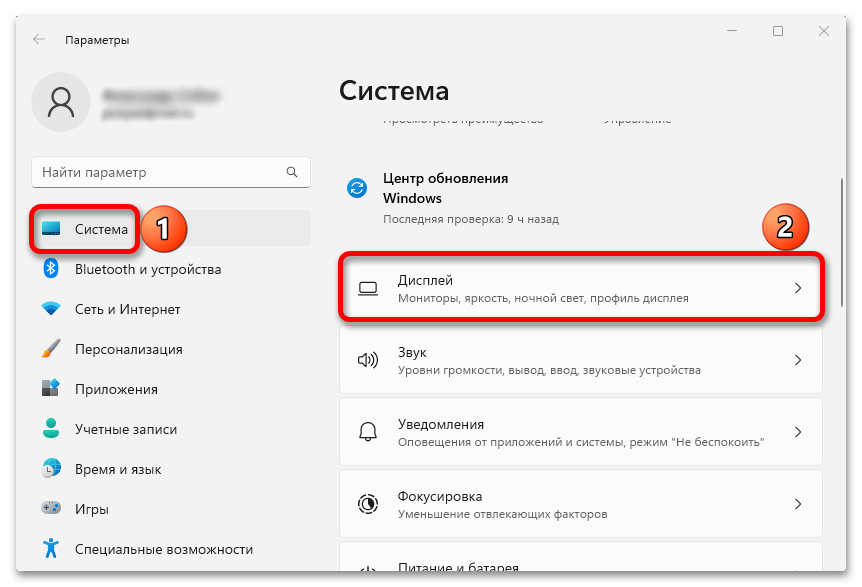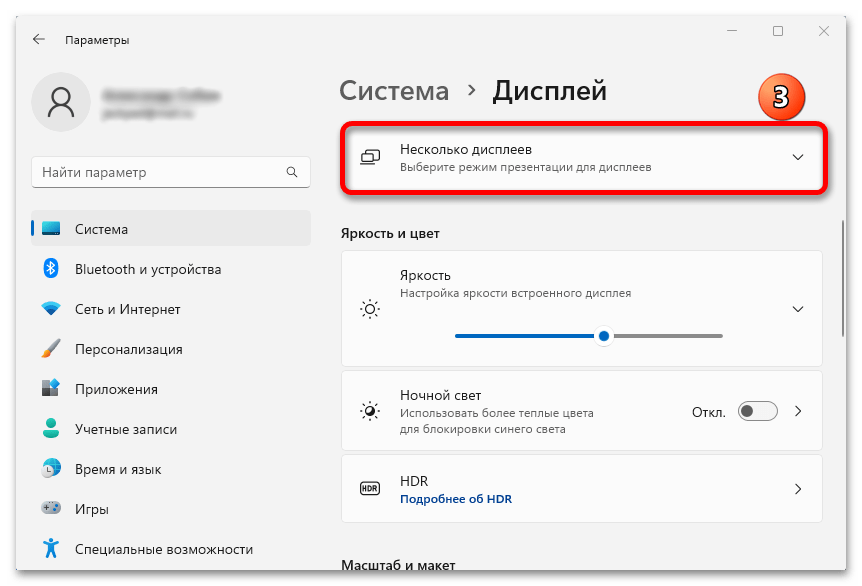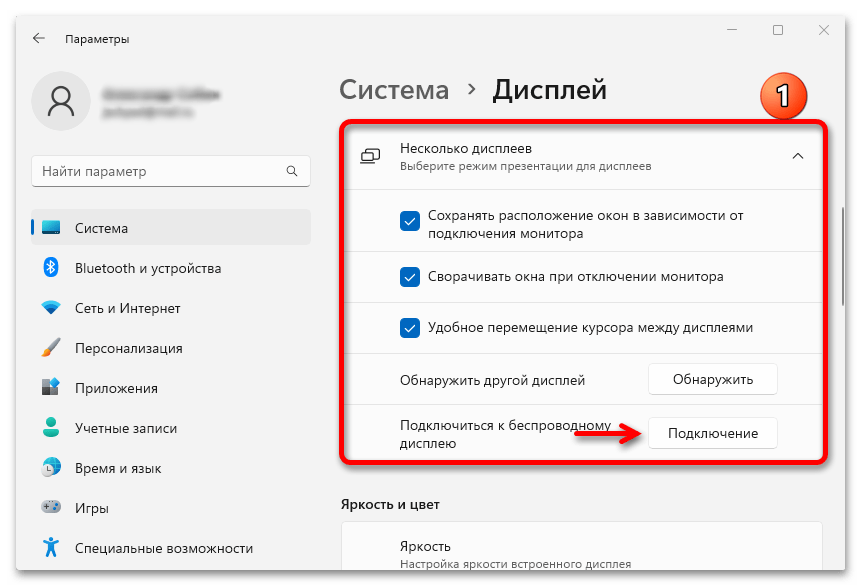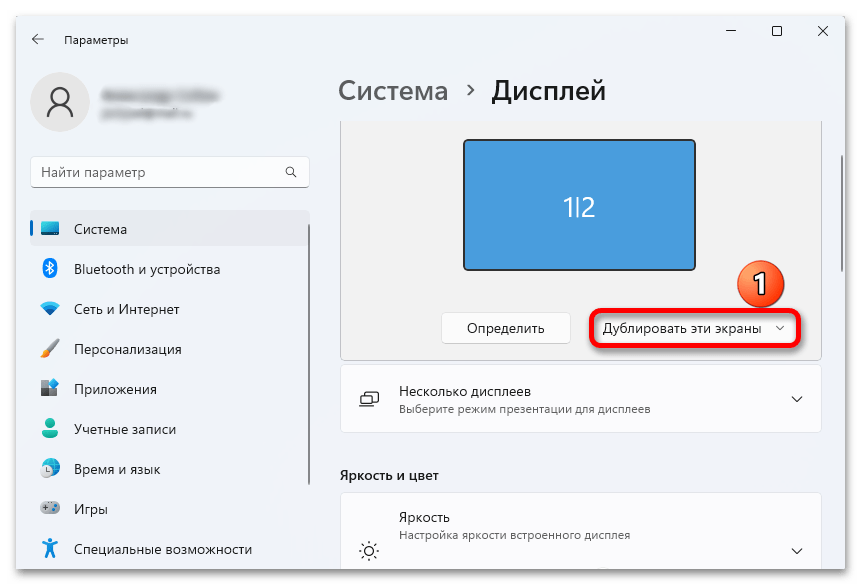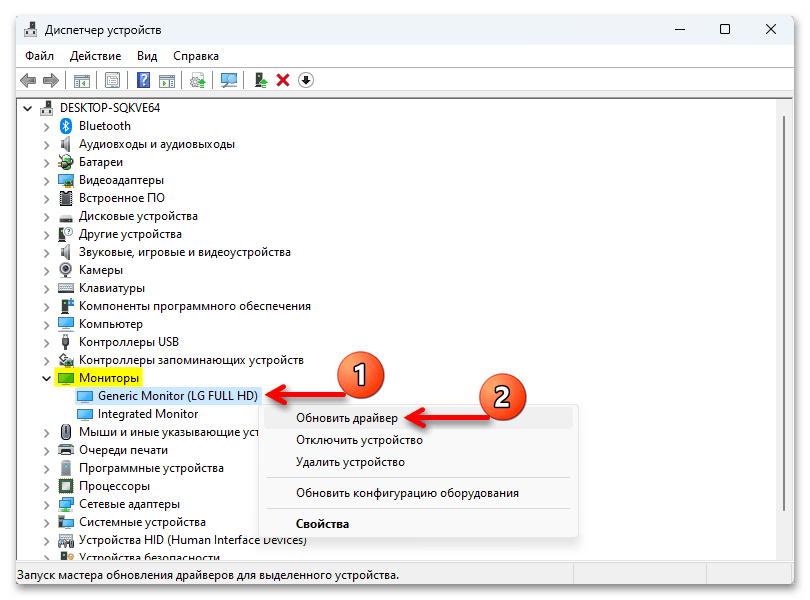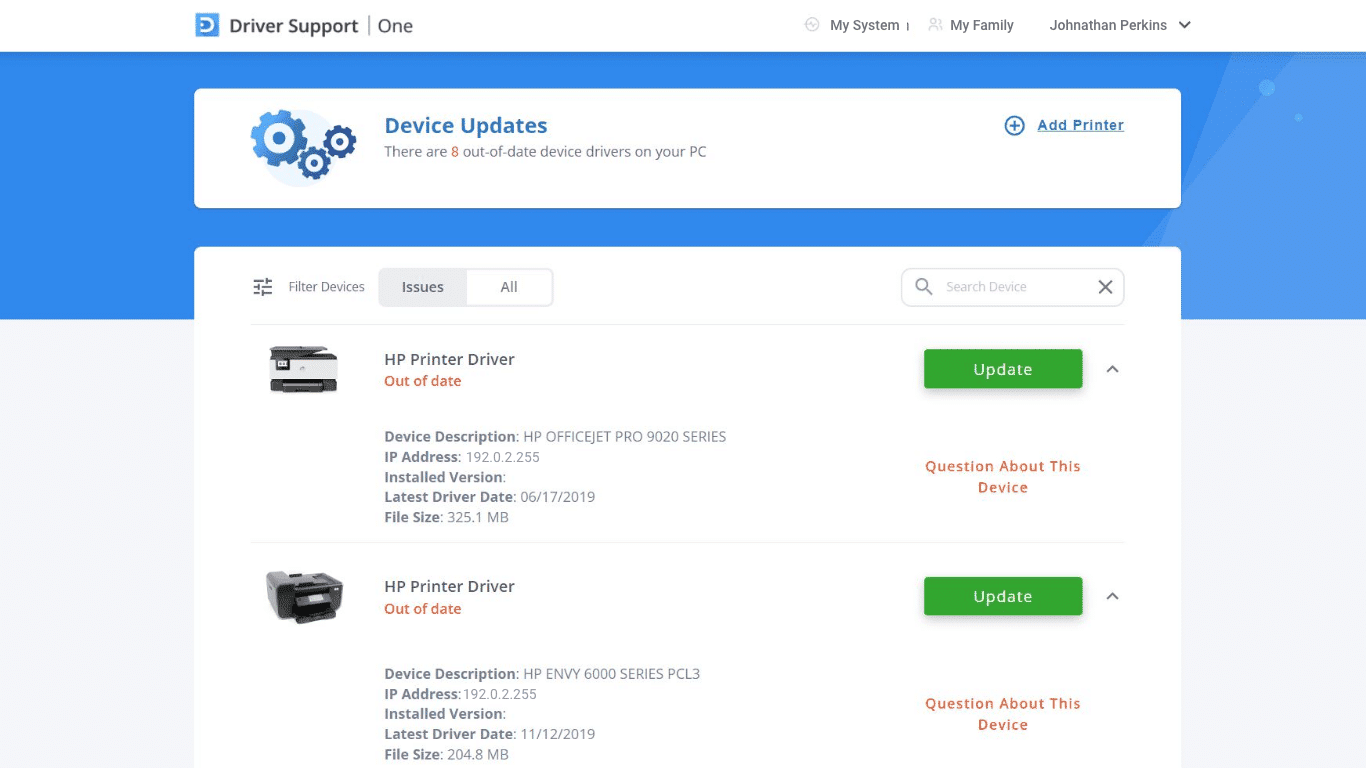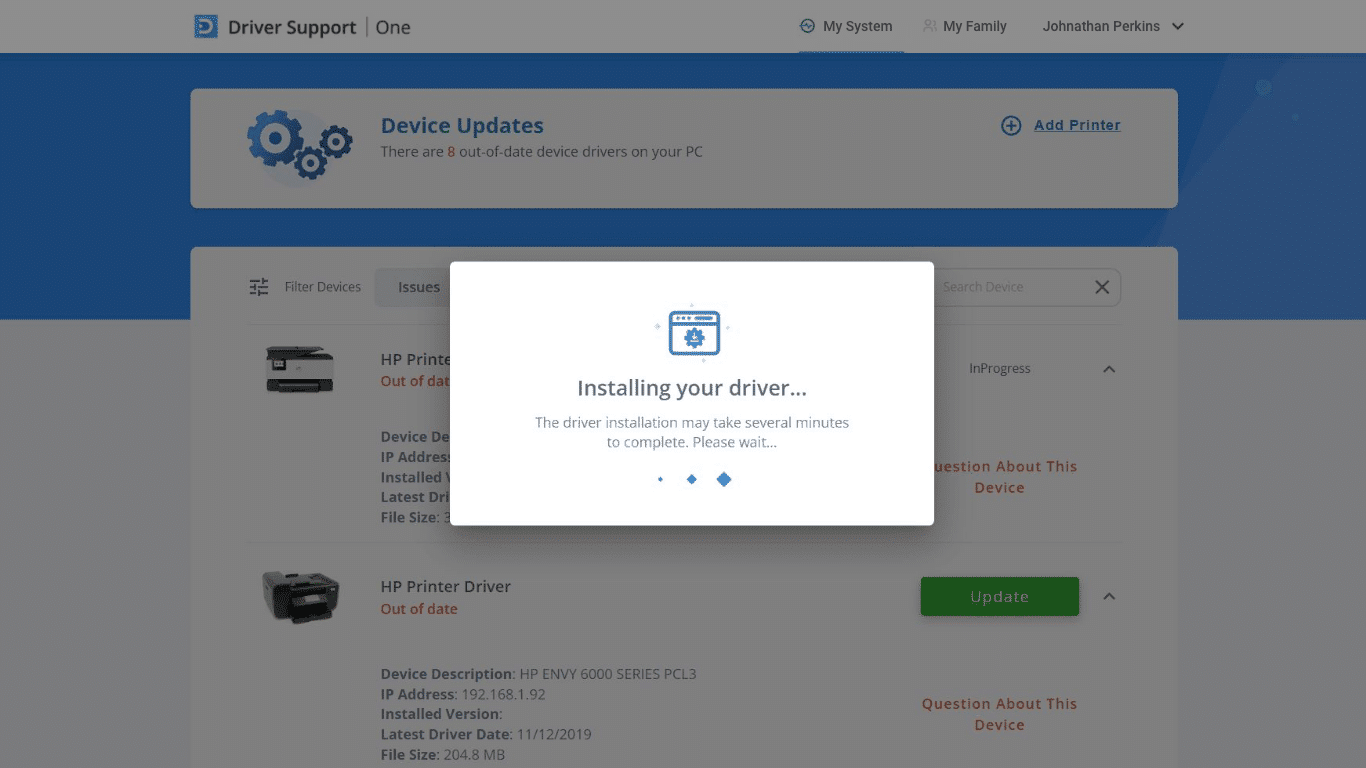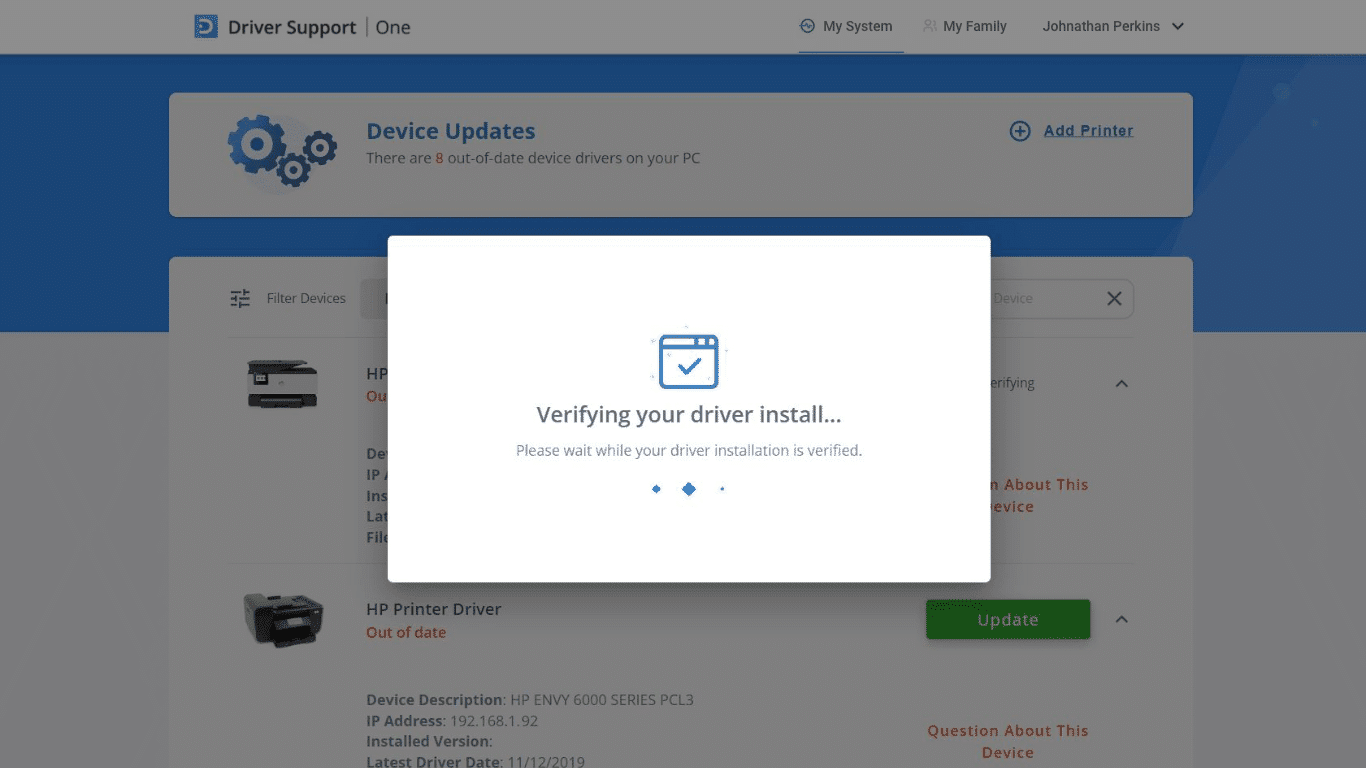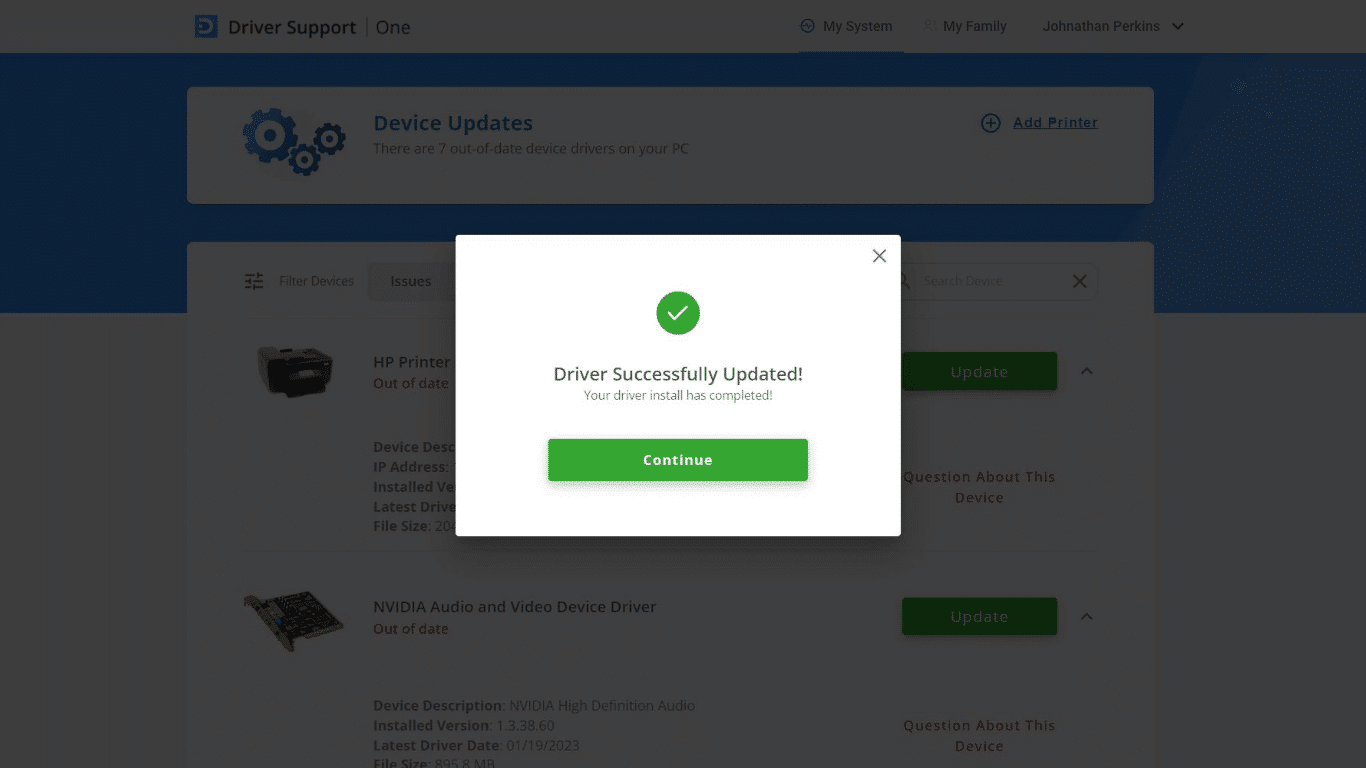Все способы:
- Способ 1: Обнаружение устройства
- Способ 2: Формат отображения
- Способ 3: Регулировка частоты обновления
- Способ 4: Работа с драйверами
- Способ 5: Настройка BIOS
- Способ 6: Диагностика физического подключения
- Вопросы и ответы: 5
Способ 1: Обнаружение устройства
Обычно второй монитор начинает работать без дополнительной настройки, но если система его даже не идентифицировала, можно воспользоваться функцией принудительного обнаружения.
- Сочетанием клавиш «Win+I» открываем «Параметры» Windows 11, во вкладке «Система» переходим в настройки дисплея,
открываем блок «Несколько дисплеев»
и нажимаем «Обнаружить». Возможно, это поможет распознать второй монитор.
- Если монитор беспроводной, нажимаем «Подключение»,
в появившемся окне выбираем дисплей, а затем подтверждаем сопряжение на самом устройстве.
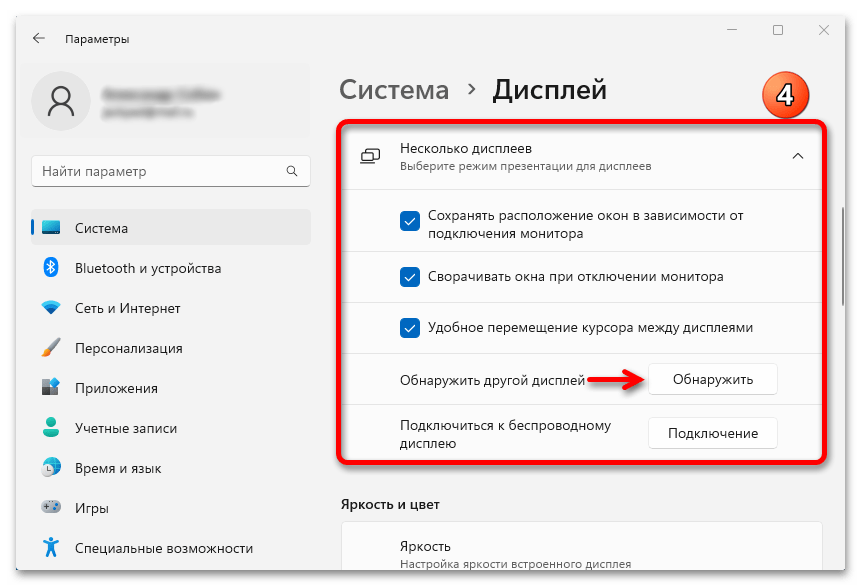
Способ 2: Формат отображения
Windows 11 поддерживает разные режимы проецирования. Возможно, у вас выбран тот, при котором второй монитор не получает картинку. Естественно, эта функция будет работать, если устройство обнаружено, но оно ничего не транслирует.
- Комбинацией клавиш «Windows+P» вызываем окно выбора типа передачи картинки на экран. В данном случае включен «Повторяющийся» режим, при котором изображение должно быть одинаковое на обоих экранах, а значит, проблема не в этом.
Но если у вас выбран режим «Только экран компьютера» или «Только второй экран», переключитесь с них, так как они предусматривают передачу изображения лишь на один из мониторов.
- Альтернативный вариант – открываем настройки дисплея, как мы это делали в первом способе, в верхней части страницы кликаем кнопку под изображением экранов
и переключаем режимы.

Способ 3: Регулировка частоты обновления
Вообще, два монитора с разной частотой обновления могут работать одновременно. Но, возможно, ваша видеокарта не способна обработать установленную герцовку или само устройство отображения данных, согласно своим характеристикам, ее не поддерживает. В этом случае можно подключится к другой видеокарте, если она есть, либо попробовать изменить значение частоты обновления, например снизить его, если стоит самое высокое.
- Снова открываем блок с настройками экрана, прокручиваем страницу вниз и кликаем «Расширенные параметры дисплея».
- Сверху выбираем второй монитор, а в блоке ниже меняем значение частоты обновления.
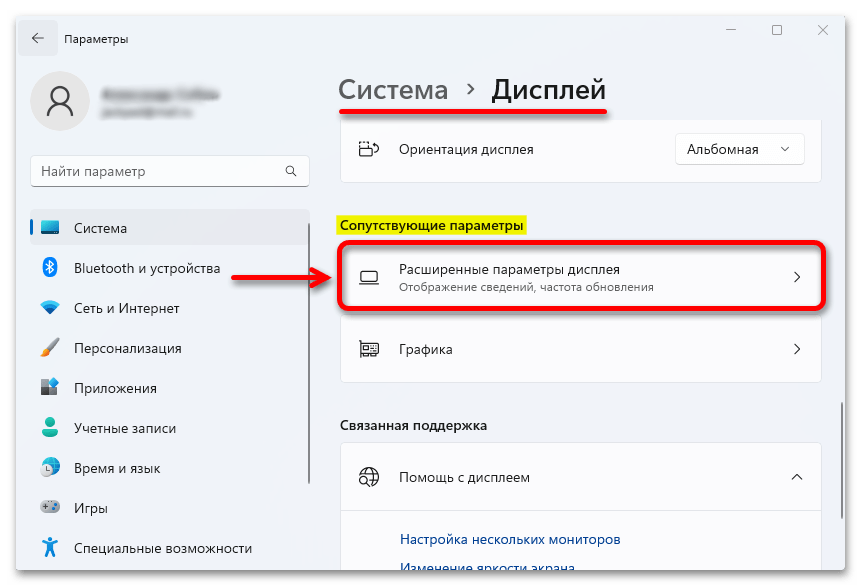
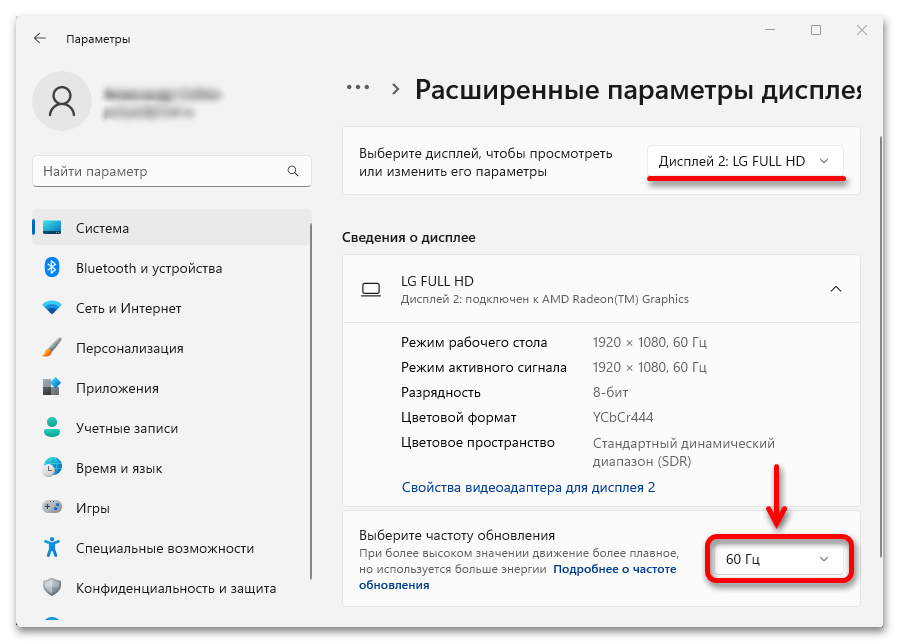
Способ 4: Работа с драйверами
Иногда недостаточно просто подключить монитор к видеокарте, так как и тому, и другому устройству для нормального взаимодействия с системой нужны драйверы. Возможно, в этой области как раз и кроется проблема.
- Кликаем правой кнопкой мышки «Пуск» и открываем «Диспетчер устройств».
- Ищем вкладку «Мониторы», разворачиваем ее и, если кроме основного дисплея в ней отображается второй монитор или хотя бы неизвестное устройство, значит, Виндовс 11 все же их видит, но из-за устаревания драйверов или их отсутствия не передает картинку. Поэтому кликаем по устройству правой кнопкой мышки, в контекстном меню выбираем «Обновить драйверы»
и кликаем «Автоматический поиск».
- Если подходящего ПО нет, можно запустить поиск в Центре обновления Windows.
- Если это не помогло или второй монитор вообще не отображается, значит, возможно, дело в драйверах видеокарты. Например, установлена версия, которая не поддерживает подключение второго монитора. Поэтому открываем блок «Видеоадаптеры» и таким же образом пробуем обновить драйверы видеокарты.
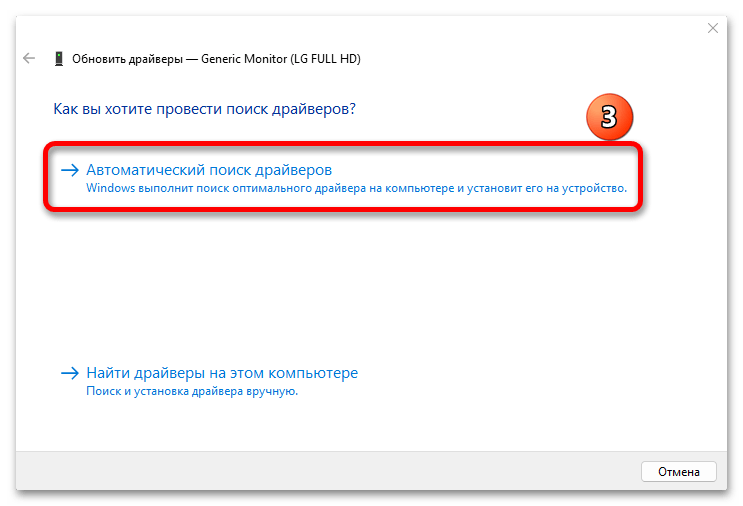
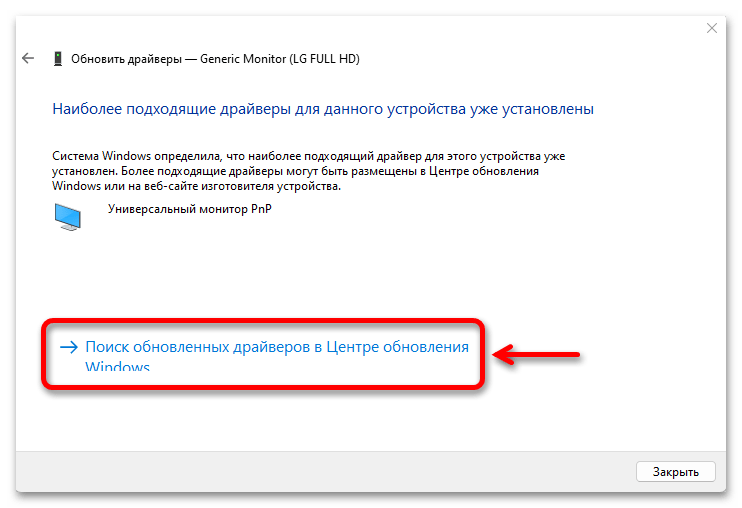
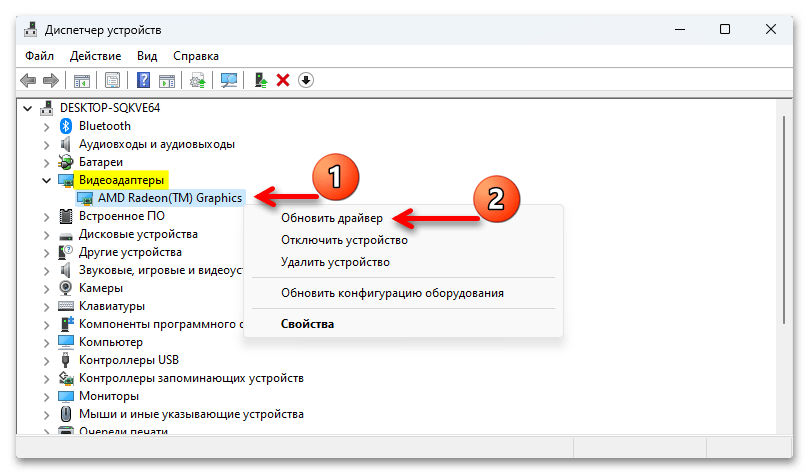
Впрочем, ограничиваться поиском программного обеспечения только с помощью службы «Windows Update» не стоит. Довольно распространены случаи, когда производитель выпускает для своих устройств «свежие» драйверы, но они далеко не сразу появляются на серверах Microsoft. Поэтому поищите актуальные версии ПО самостоятельно, используя способы, которые описаны в отдельных статьях на нашем сайте.
Подробнее:
Поиск и инсталляция драйверов для монитора
Установка драйверов на видеокарту
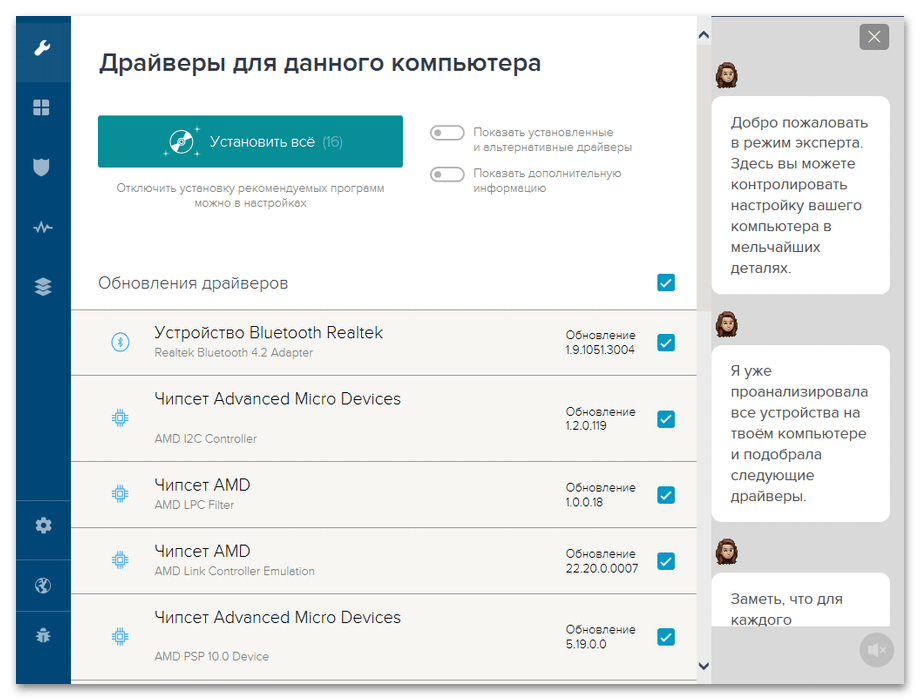
Способ 5: Настройка BIOS
Если компьютер оборудован двумя видеокартами – интегрированной и дискретной, и к обоим подключены мониторы, откройте «Диспетчер устройств» и посмотрите, сколько видеоадаптеров отображается. Если один, значит какая-то графическая карта, скорее всего, отключена в системе BIOS. Конечно, на разных материнских платах процесс переключения может отличаться, но основной принцип подробно описан в отдельных статьях на нашем сайте.
Подробнее:
Включение дискретной видеокарты в BIOS
Как переключать видеокарты на ноутбуке HP
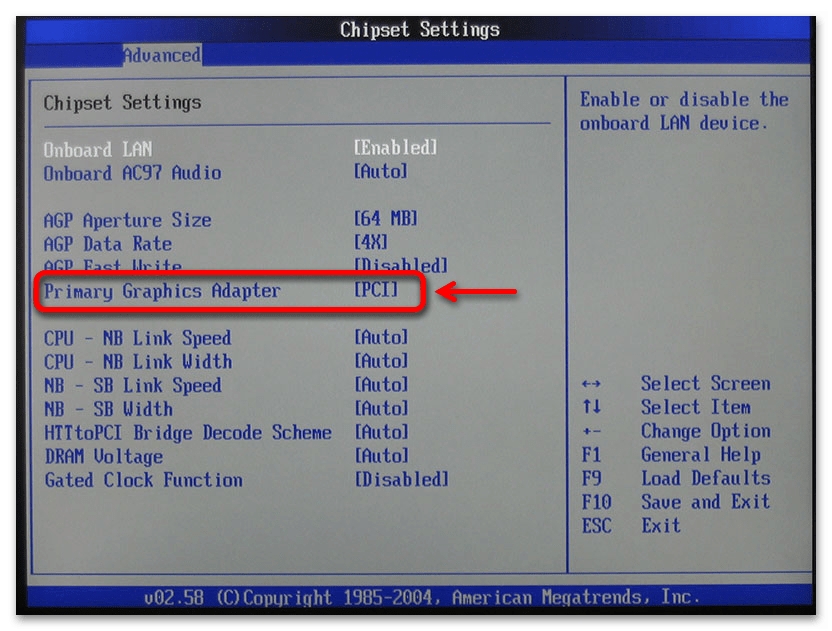
Способ 6: Диагностика физического подключения
Проверьте все кабельные соединения на наличие повреждений. Если используются переходники, попробуйте подсоединиться без них или используйте другие, ведь такие аксессуары, особенно если они дешевые, как раз могут быть причиной неполадок. По возможности попробуйте подключить другой монитор или телевизор. Также отключите на время все внешние периферийные устройства (флешки, диски, колонки, принтеры, проекторы и прочее), которые в данный момент не нужны вам для работы.
Наша группа в TelegramПолезные советы и помощь
In today’s fast-paced digital world, a dual-monitor setup is not just a luxury; it’s a necessity for many. The ability to spread your digital workspace across two screens can significantly boost productivity, make multitasking a breeze, and enhance the overall computing experience. However, the transition to Windows 11 has brought with it a slew of technical quirks, one of the most frustrating being the operating system’s occasional failure to detect a second monitor. This hiccup can derail your workflow, leaving you scrambling for solutions.
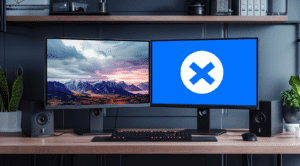
Fortunately, you’re not without hope. This comprehensive guide aims to demystify this issue, offering step-by-step solutions to get your dual-monitor setup back on track. From checking physical connections to tweaking display settings, we’ll cover all bases to ensure no stone is left unturned in your quest for resolution. Additionally, we introduce a powerful ally in this journey: DriverSupport. This tool is invaluable for automatically detecting and updating outdated or corrupted drivers, often a root cause of monitor detection issues. Whether you’re a tech novice or a seasoned pro, our guide, peppered with insights on leveraging DriverSupport, will help you navigate through the common pitfalls associated with dual-monitor configurations in Windows 11.
As we delve into the nitty-gritty of troubleshooting, remember that every problem has a solution. With the right approach and tools at your disposal, your dual-monitor setup will soon be up and running, ready to enhance your digital life. So, let’s embark on this journey to reclaim your productivity and expand your digital horizon with Windows 11.Give DriverSupport | ONE a try today!
Understanding Windows 11 not detecting second monitor
Common Causes
- Hardware Compatibility: Not all monitors are created equal, and sometimes, a second monitor may not be compatible with your current setup or Windows 11’s hardware requirements. This includes issues with the monitor itself, the cable types (HDMI, DisplayPort, VGA), or the port being used on your computer.
- Outdated or Corrupted Graphics Drivers: Drivers are the bridge between your operating system and hardware. If they’re outdated or corrupted, Windows 11 might not be able to recognize your second monitor. This is where DriverSupport shines, offering an easy way to keep your drivers up to date and in good health.
- Incorrect Display Settings: Sometimes, the issue is not with the hardware or drivers but with the display settings within Windows 11. Incorrect configuration can prevent the second monitor from being detected properly.
How to Identify Your Issue
- Check Hardware Compatibility: Verify that your monitor, cables, and ports support dual-monitor setups and are compatible with Windows 11. A quick check of your hardware specifications against the manufacturer’s recommendations can save you a lot of time.
- Inspect Cables and Connections: Loose or damaged cables are often the culprit. Ensure that all connections are secure and that the cables are not damaged. Try swapping cables if possible to rule out any issues here.
- Use Device Manager to Check Drivers: Navigate to the Device Manager and check for any warning signs next to your graphics drivers. This could indicate a problem that needs addressing.
- Review Display Settings: Go to your display settings in Windows 11 to ensure the second monitor is enabled and set up correctly. Sometimes, simply clicking “Detect” can resolve the issue.
By methodically ruling out each potential cause, you can narrow down the specific issue at hand.

Step-by-Step Solutions
Check Physical Connections
Follow these steps to ensure that your hardware connections are not the problem:
- Secure Connections: Double-check that both ends of your display cable (HDMI, DisplayPort, VGA, etc.) are securely connected to your monitor and your PC.
- Try Different Ports: If your PC has multiple output ports, try connecting your second monitor to a different port. Sometimes, the issue could be with a specific port.
- Switch Cables: If possible, swap your current cable with another one to rule out any cable-related issues.
Updating or Reinstalling Display Drivers with DriverSupport
- Automatically Update Drivers: DriverSupport scans your system for outdated drivers and provides an easy way to update them with just a few clicks, ensuring your graphics drivers are always up to date.
- Manual Driver Update: If you prefer a hands-on approach, you can manually update your drivers through the Device Manager. Right-click on your graphics driver, select “Update driver,” and follow the prompts.
- Reinstall Drivers: Sometimes, an update isn’t enough. Uninstalling and then reinstalling your graphics driver can resolve deeper issues.
Adjusting Display Settings
- Display Settings: Right-click on your desktop and select “Display settings.” Use the “Detect” button to try and force Windows to recognize your second monitor.
- Projecting to This PC: Press the Windows key + P to open the projection options. Select “Extend” to see if it helps in detecting your monitor.
Troubleshoot Hardware Issues
- Test the Monitor: Connect your second monitor to another computer. If it doesn’t work there, the issue might be with the monitor itself.
- Check for Monitor Compatibility: Ensure that your monitor is compatible with Windows 11. Some older monitors might have compatibility issues.
By following these step-by-step solutions, you should be able to resolve the issue of Windows 11 not detecting your second monitor.
Leveraging DriverSupport for Easy Resolution
When it comes to troubleshooting monitor detection issues on Windows 11, DriverSupport stands out as a pivotal tool. Here’s how DriverSupport can be your ally in resolving these issues:
Simplifying Driver Updates
- Automated Detection and Update: DriverSupport scans your system to identify any outdated or missing drivers. With its comprehensive database of drivers, it ensures that your graphics drivers, crucial for monitor detection, are always up to date with the latest versions provided by manufacturers.
- Ease of Use: With an intuitive interface, DriverSupport makes it easy for anyone to update their drivers without diving into the complexities of device management. This is especially beneficial for users who may not feel comfortable navigating the Device Manager or who are unsure which driver versions are optimal for their system.
Diagnosing and Fixing Driver Issues
- Identifying Driver-Related Issues: DriverSupport can help pinpoint if a driver issue is causing your second monitor not to be detected. By ensuring drivers are not only current but also correctly installed, it removes a significant barrier to dual-monitor setup.
- Streamlined Reinstallation: In cases where a simple update doesn’t solve the issue, DriverSupport facilitates the reinstallation of drivers. This clean slate approach can often resolve deeper-seated issues that an update alone cannot fix.
Advantages Over Manual Management
- Time-Saving: Manually checking, downloading, and updating drivers can be a time-consuming process, requiring significant effort and technical knowledge. DriverSupport automates this process, saving users time and reducing the risk of errors.
- Reducing the Risk of Incompatibility: Incorrect driver versions can lead to further issues. DriverSupport ensures that the drivers installed are compatible with your specific hardware and Windows 11, mitigating the risk of compatibility problems.
How To Use DriverSupport
If you want to save time and frustration and not have to install drivers manually, you can use DriverSupport to help you. DriverSupport can scan and detect all all the major devices in your computer and give you a list of devices that need to be updated. You can easily and quickly pick which devices to update and DriverSupport will download and install the correct driver for you.
-
When you are registered and in the app you can go to the Driver Update section and see all the devices that need attention, example below
DriverSupport — Driver Update List - Once the driver update has finished automatically downloading you can click the green «Update» button on whatever device you want to update first, once the install begins we will walk you through the process.
DriverSupport — Driver Installing - When the device driver is fully updated we will verify the driver is in place and also confirm when finished. It’s that easy!
-
When the driver is finished verifying DriverSupport will notify you of the successful update!
We make it hassle free and accurate! Give DriverSupport a try today!
-
By incorporating DriverSupport into your troubleshooting toolkit, you enhance your chances of quickly resolving monitor detection issues.
Advanced Troubleshooting for Windows 11 not detecting your second monitor
When the basic and intermediate steps fail to resolve the second monitor detection issue in Windows 11, it’s time to consider advanced troubleshooting techniques. These methods should be approached with caution and are recommended for users comfortable with deeper system adjustments.
Editing the Registry (For Advanced Users)
Caution: Editing the Windows registry can have significant implications if not done correctly. It’s recommended to back up the registry before making any changes.
- Open Registry Editor: Press
Win + R, typeregedit, and hit Enter to open the Registry Editor. - Navigate to the Graphics Drivers Key: Go to
HKEY_LOCAL_MACHINE\SYSTEM\CurrentControlSet\Control\GraphicsDrivers. - Configure TdrDelay: Right-click on the GraphicsDrivers key, select New > DWORD (32-bit) Value, and name it
TdrDelay. Double-click on it and set the Value data to8. This increases the GPU processing time, which can help in detection. - Restart Your Computer: For the changes to take effect, restart your computer and check if the issue is resolved.
Resetting Windows 11 Display Settings
Sometimes, a fresh start can resolve lingering issues. Resetting your display settings to their default can eliminate any incorrect configurations causing the problem.
- Open Windows Settings: Press
Win + Ito open the Settings app. - Navigate to System > Display: Here you can find various display settings.
- Reset Display Settings: Look for an option to reset the display settings to their default. If there’s no direct option, you may need to manually adjust the settings to their original state, based on your system’s default configuration.
- Check for Monitor Detection: After resetting, check if Windows 11 now detects your second monitor.
These advanced techniques target deeper system settings and can often resolve issues that simpler methods cannot. However, due to their complexity and potential impact on system operation, they should be used as a last resort and with great care.
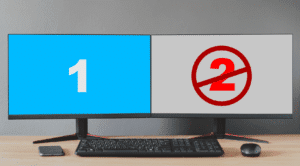
Conclusion
Setting up dual monitors in Windows 11 can be tricky, especially if the second monitor isn’t detected. Yet, with this guide’s clear solutions and troubleshooting tips, including checking connections and using DriverSupport, you’re ready to tackle these issues and boost your productivity.
Remember, while technology can sometimes falter, the solutions are often within reach. DriverSupport emerges as a particularly valuable tool in this journey, simplifying the process of keeping your drivers up to date and in optimal condition. This not only helps in resolving current issues but also in preventing future ones, ensuring a smoother, more reliable computing experience.
In conclusion, the path to a fully functional dual-monitor setup in Windows 11 involves a blend of basic troubleshooting, software assistance, and, when necessary, advanced system tweaks. By approaching this process methodically and with patience, you can overcome the challenges and enjoy the vast benefits of an expanded digital workspace.
We encourage you not to let technical difficulties dampen your productivity or creativity. With the right tools and knowledge, every problem has a solution. Here’s to an uninterrupted, expansive view of your digital world, made possible by a seamless dual-monitor setup on Windows 11.

Is your Windows 11 not detecting second monitor and you are looking for a solution to the issue?
Due to its enormous benefits in terms of multitasking for people who work with many programs at once, using multiple displays has become increasingly popular.
In general, it boosts productivity while also improving a workspace’s appearance. This is the reason why many Youtubers, Programmers, and Video editors prefer a dual monitor setup nowadays
Setting up a second monitor is quite easy and can be done in a short period of time. On the other hand, there have been several online complaints about Windows 11 not detecting second monitor.
This is a very frustrating issue for many users as they struggle with finding ways to resolve the issue but result in none.
Fortunately, there are some tried-and-true methods you may use to resolve this problem, and we will go over them in detail in this article.
Let’s first discuss some factors that cause Windows 11 not to detect second monitor.
Table Of Contents
- Fix Windows 11 not detecting second monitor
- Fix 1: Make sure the monitor and HDMI cable is in proper condition
- Fix 2: Update Display Driver
- Use INF file from manufacturer’s site and install it to update display driver
- Use Windows Update to update the display driver
- Use Driver Installer
- Fix 3: Uninstall and reinstall the display driver
- Fix 4: Roll back Display Driver
- Fix 5: Set the same refresh rate on both screens
- Fix 6: Check Display Preferences
- Fix 7: Force your computer to detect the monitor
- Frequently Asked Questions
- Why is my second monitor not detected on Windows 11?
- Can my HDMI cable be the reason for Windows 11 not detecting second monitor issue?
- How can I connect with a second monitor wirelessly?
Fix Windows 11 not detecting second monitor
Here are some fixes you should attempt if you get Windows 11 not detecting second monitor issue.
Before your issue is solved, you might need to attempt more than one of these solutions. Also, we recommend restarting your computer and doing Fix 1 before attempting the other alternatives.
Fix 1: Make sure the monitor and HDMI cable is in proper condition
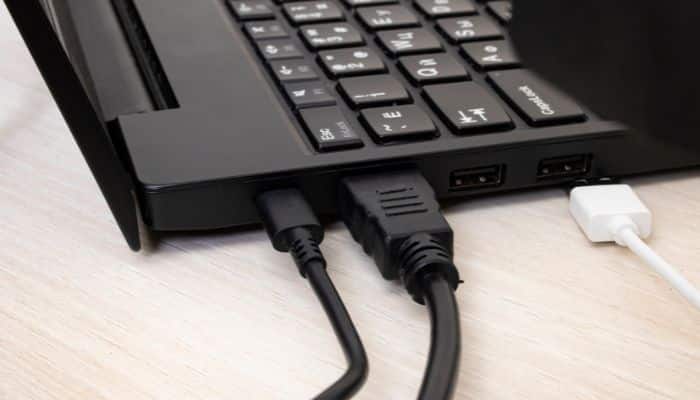
Your monitor must be turned on and properly connected to the Windows 11 computer before it can be detected. In some instances, the HDMI cable you are using or the ports on either of the screens are to blame for Windows 11’s failure to detect the second monitor.
Hence, you should check that everything is in order. The following are the key actions you should take and verify before exploring other solutions:
- Make sure the second monitor is turned on
- Try to use another HDMI cable
- Try another HDMI port
- Choose the correct input on your monitor
- Check for dirt or debris in the HDMI port and cable and remove it
Fix 2: Update Display Driver
The display drivers, also known as graphics drivers, are in charge of communicating commands to the Windows OS and display hardware on a computer. You will undoubtedly start experiencing problems with some of your display functionalities if this is a display driver issue.
Using an outdated display driver is one of the major causes of driver issues, and it may be the reason for Windows 11’s failure to discover the second monitor. If that is the case, updating the driver would be the only solution.
You must manually download the driver or use one of the alternative options described below as the Device Manager option to “Search automatically for device driver software” doesn’t actually function to update your driver.
- Download the driver’s INF file from the manufacturer’s site and install it.
- Use Windows Update
- Use Driver Installer
Use INF file from manufacturer’s site and install it to update display driver
1. Right-click on the Start menu and tap on Device Manager.
2. Double-click the Display adapters option on the Device Manager window and note the display driver you have on your computer.
3. Go to the display driver’s website and download an updated driver version.
4. Now, go back to Device Manager and right-click your display driver under Display adapters.
5. On the resulting drop-down menu, tap on the Update driver option.
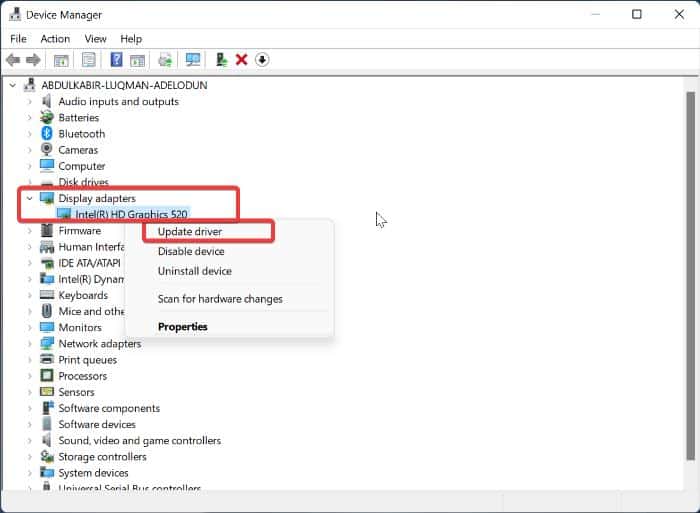
6. Select Browse my computer for drivers and follow other on-screen prompts to select the driver package you downloaded earlier.
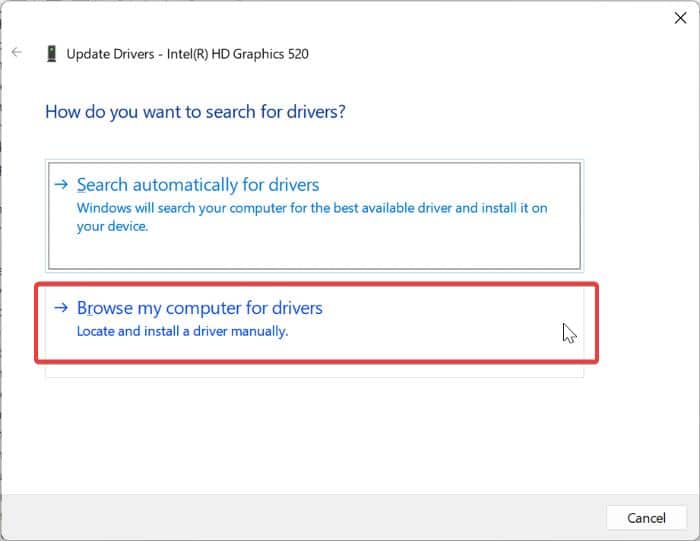
Use Windows Update to update the display driver
1. Press Windows + I to open Settings on your computer.
2. Click on Windows Updates on the left-hand pane.
3. Navigate to Advanced options and click on it.
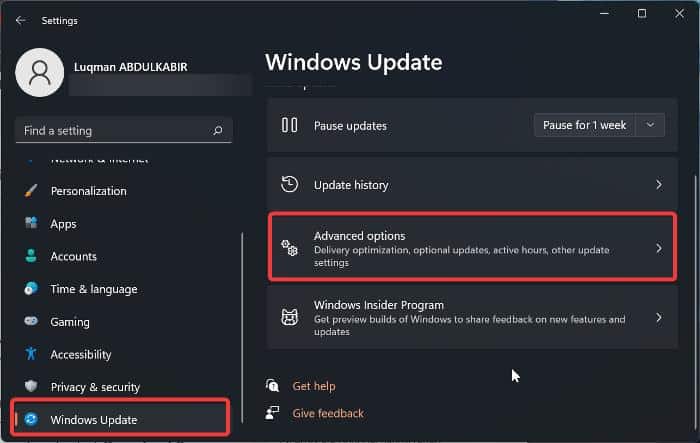
4. Select Optional updates under Additional options.
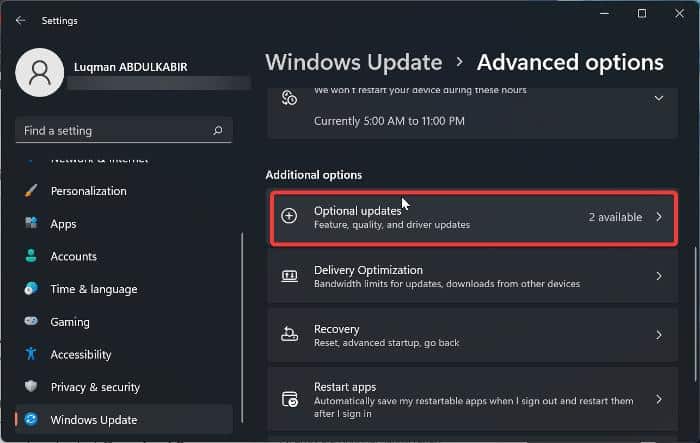
5. Click on Driver updates.
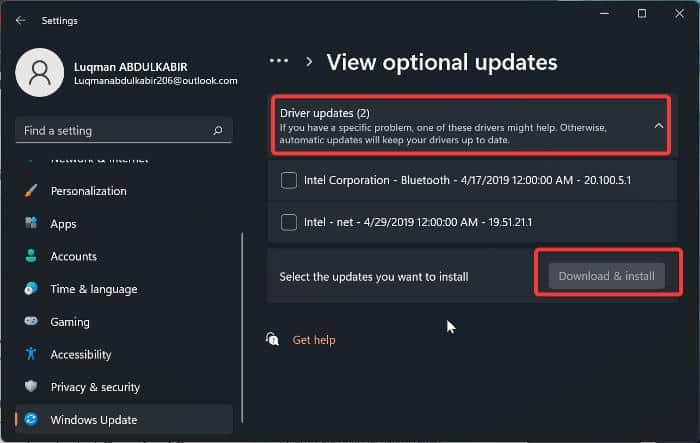
6. Look for your Graphics driver. If any update is available, tap on it and select Download & Install at the bottom of the section.
Use Driver Installer
You may also use the appropriate driver installer provided by the manufacturer of your GPU to upgrade your display driver. Here are the download links for the graphics card drivers for NVIDIA, Intel, and AMD.
- NVIDIA GeForce Experience
- Intel Driver & Support Assistant
- AMD Radeon Software Adrenalin Edition
After updating your display driver, it is recommended that you restart your computer and then connect your second monitor.
Fix 3: Uninstall and reinstall the display driver
Reinstalling the display driver has also effectively resolved the Windows 11 not detecting second monitor issue. You can try it, and perhaps it will help you resolve the problem. Here is how to do it:
1. Open Device Manager and double-click Display adapters.
2. Right-click your display driver and select Uninstall device.
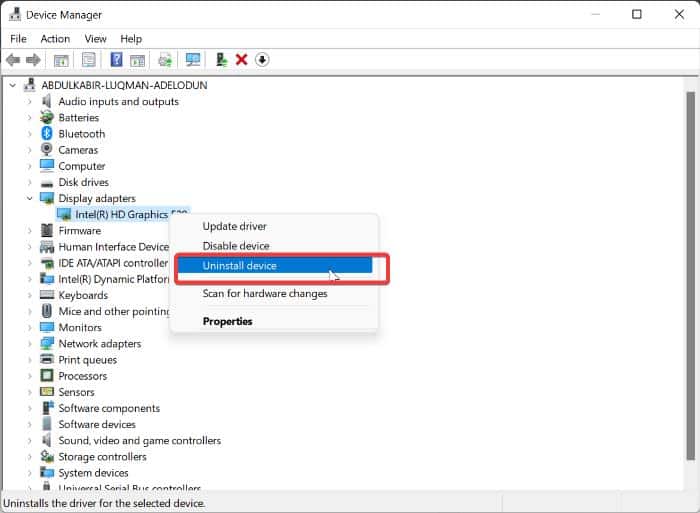
3. Then, restart your computer and open Device Manager again.
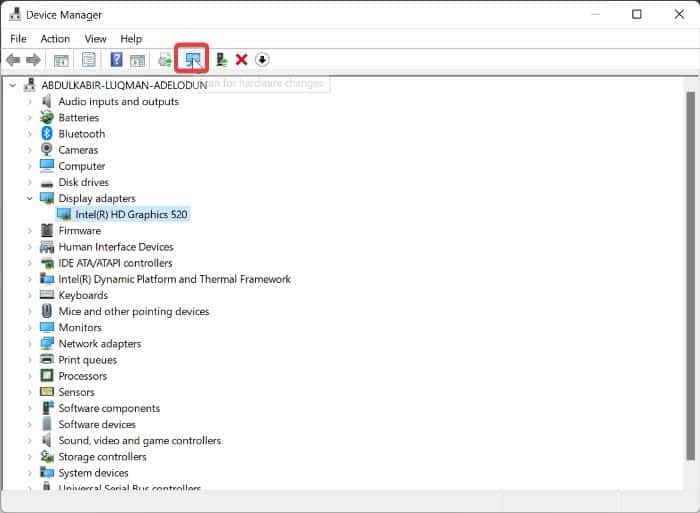
4. On the Device Manager page, click on Scan for hardware changes.
Fix 4: Roll back Display Driver
If the problem arose right after you updated your display driver or performed Windows Update, then there is a problem with the updated driver version. Therefore, you should roll back to the previous version of your display driver. Here is how to roll back the display driver.
1. Open Device Manager and double-click on Display adapters.
2. Right-click your display driver and select Properties.
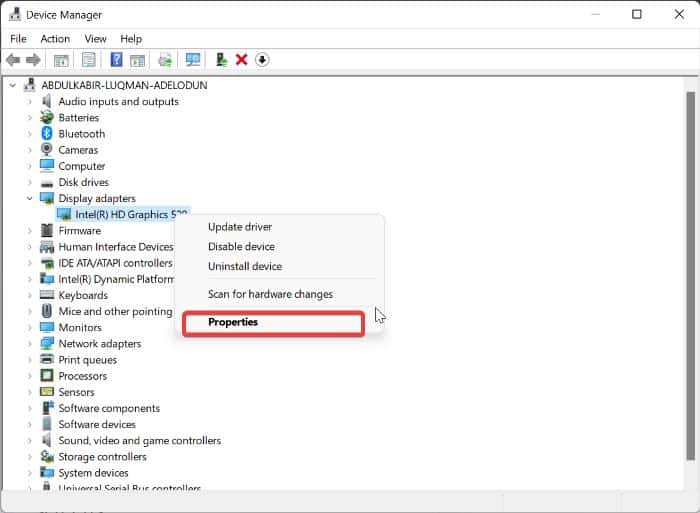
3. Switch to the Driver section, click on Roll Back Driver and select Yes to confirm the action.
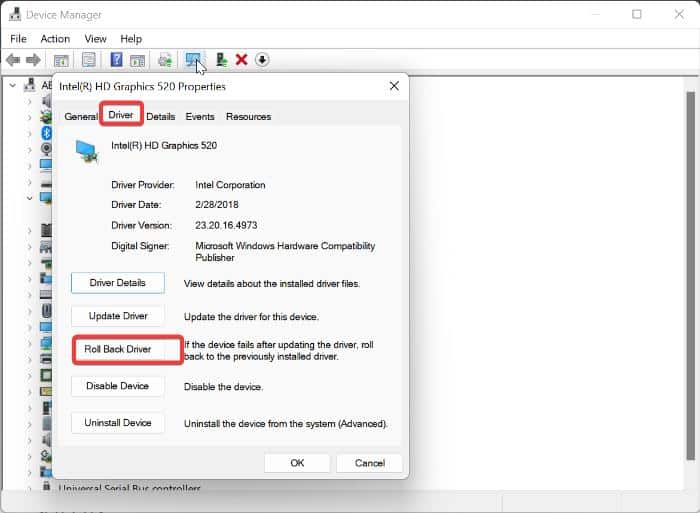
Also Read: No Sound on Windows 11? Here’s How To Fix No Audio [SOLVED]
Fix 5: Set the same refresh rate on both screens
Another approach you can use to fix Windows 11 not detecting dual monitor issue is to set the same refresh rate for both screens. This is because setting different refresh rates for the screen may cause software conflict on your PC and lead to this issue.
1. Press Windows + I to open Settings on your computer.
2. Select System and click on Display.
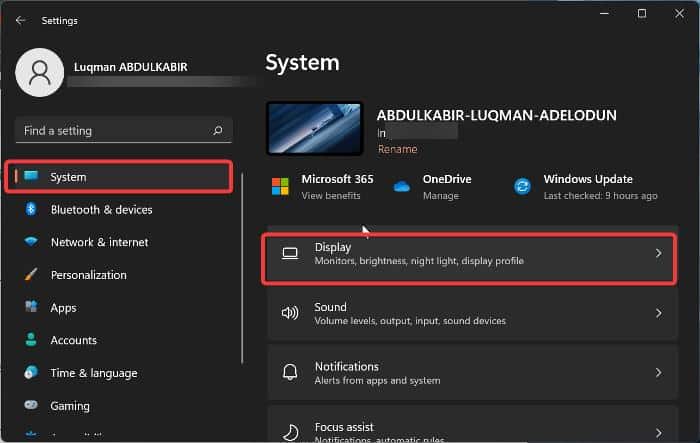
3. Scroll down and select Advanced display.
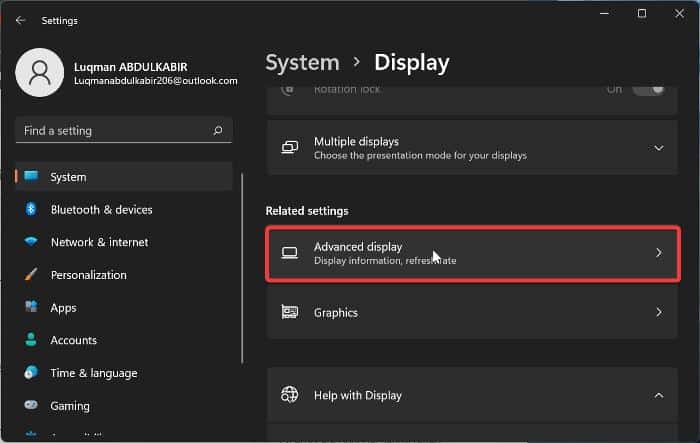
4. On the Select a display to view or change its settings option, choose the display you want to change its refresh rate.
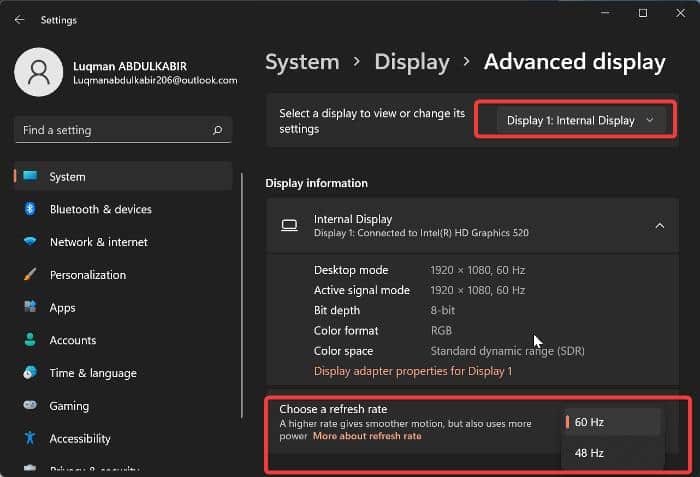
5. Go to Choose a refresh rate and select a refresh rate that works with both screens. Then follow other on-screen prompts to save the change.
After this, unplug the monitor from your PC and reconnect it. Hopefully, the issue will have been fixed.
Fix 6: Check Display Preferences
There are times when the second monitor would have connected with your monitor, but due to the display preference on your PC, you won’t be seeing anything on the second monitor. This is what you can do in that case:
1. Press Windows + P on your keyboard.
2. On the resulting menu, select Extend.
Fix 7: Force your computer to detect the monitor
You can also force your computer to detect the second monitor by following the steps below:
1. Press Windows + I to open Settings on your computer
2. Select System and tap on Display.
3. Navigate to the Multiple displays option under the Scale & layouts category and click on it.
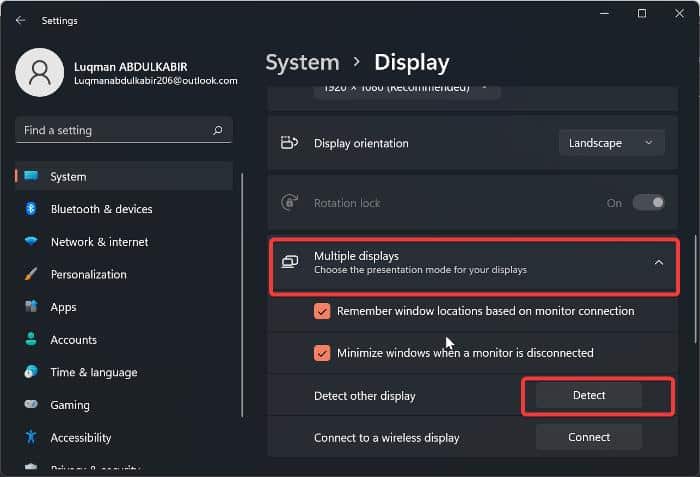
4. Check the boxes under the Multiple displays option and tap on Detect.
Frequently Asked Questions
Why is my second monitor not detected on Windows 11?
If you’ve ruled out hardware problems like HDMI port cable or ports issue, what majorly causes Windows 11 not to detect a second monitor is a buggy, corrupted, or outdated display driver. In order to resolve this issue, you can go over the solutions we’ve discussed in the article.
Can my HDMI cable be the reason for Windows 11 not detecting second monitor issue?
A faulty or improperly plugged HDMI cable will make it impossible for your PC to detect a second monitor. Hence, if you are having issues with Windows 11 detecting a second monitor, try checking if your HDMI cable is properly plugged in and make sure it is in good condition also.
How can I connect with a second monitor wirelessly?
If you need to connect your Windows 11 PC with a second monitor using Bluetooth, here are the steps to do it:
1. Put the second monitor in pairing mode (you can refer to the monitor’s manual for directions on how to do that).
2. On your Windows PC, press Windows + I to show the Cast option, then click on the monitor you want to connect to.
Final Thoughts
It is important to know that using multiple displays on a Windows computer is quite simple, but it could be challenging if you have problems with your graphics driver or don’t know how to connect to the monitor.
However, using the suggestions in this article, you ought to be able to quickly fix the problem with Windows 11 not detecting second monitor and get your PC to a working condition.
Let us know the solution that worked for you in the comment section below
Luqman
A tech junkie, and music fan.
I love writing Reviews, How-to, and explainer articles related to Android, iOS, and Windows. If I’m not on my laptop brainstorming ideas for content, you’ll most probably see me watching Tv shows or streaming videos on Youtube. Don’t forget to follow me on Twitter as @Luqqman14
Before you reinstall drivers, check your power, cables, and settings
Published on August 15, 2024
Sometimes, your second monitor may seem to be powered on, but it won’t show any image; other times, the screen won’t even turn on properly. This article covers all of the best strategies for how to fix a second monitor not detected on Windows 11 issues with over 20 tested tips and tricks for you to apply.
How to Fix It When a Second Monitor Isn’t Showing Up in Windows 11
Here are all of the best solutions to try when you have issues getting Windows 11 to show your second monitor. We recommend you work through these fixes in the order presented, as we’ve listed them from the easiest and fastest to the most time-consuming and advanced.
-
Detect your Windows 11 second monitor. Open Settings and select System > Display > Multiple displays. Select either Detect to scan for a second monitor connected by cable or Connect if your second monitor is using a wireless connection.
-
Turn your second monitor on. Some monitors need to be manually switched on and won’t automatically activate when you power on your Windows 11 computer.
-
Power cycle your second monitor. Switch it off, wait at least 30 seconds, and then turn it on again. This method can help your Windows 11 device detect it by resetting the connection.
-
Change the Windows 11 project settings. Press Windows key + P and select a different project setting for your second monitor.
-
Wirelessly cast with the Google Chrome browser instead. If you’re having trouble wirelessly connecting your Windows 11 computer to a secondary monitor or TV screen, try using the Google Chrome browser’s built-in cast option instead. It tends to be much more reliable and stable than the Windows operating system’s primary casting option.
-
Manually change the monitor’s input settings. Most monitors have physical buttons to select different input signals and display options. It’s possible that the monitor isn’t automatically detecting your Windows 11 computer.
-
Change the monitor’s brightness and contrast settings. Using your monitor’s physical buttons, increase its contrast and brightness. It’s possible that your monitor is actually working, but its display is set to the darkest settings.
-
Try alternative power sources. Plug the second monitor into a separate outlet from the computer, as it may not be getting enough power.
-
Check the monitor’s cable connections. Ensure that all of the connecting cables are fully seated on both the monitor and computer ends.
-
Try a different cable connection. If your computer or connected dock has multiple ports, try connecting your second monitor to one of these instead. The original port may be the incorrect one, or it could even be damaged.
Your Windows 11 computer may support image output via a USB-C port. This port can be a convenient alternative if the primary HDMI port isn’t working properly.
-
Restart Windows 11. A quick, basic restart with the second monitor connected can help your computer detect it.
-
Update Windows 11. Windows updates often include fixes for display and hardware bugs that can affect connected devices such as second monitors.
-
Remove other devices from the dock. If you’re using a dock to connect multiple devices to your Windows 11 computer, it’s possible that one or more of these devices could be causing some kind of conflict. Unplug all of the devices you don’t need, restart your computer, and see if this fixes your secondary monitor problems.
-
Check the cable compatibility. For a second monitor to work properly with Windows 11, you need to use a cable that’s compatible with both the second monitor and your computer. Your monitor’s manual should have details on which cable type to use. If you can’t find it in the manual, check the manufacturer’s website.
-
Test the connecting cable. Swap out the cable connecting your Windows 11 computer to the second monitor for another one. If the new cable works, then the previous cable is likely damaged. If the new cable doesn’t work, the fault likely lies elsewhere.
-
Swap out the second monitor for another one. If this new monitor works then the problem lies with your original monitor. However, if the new monitor also fails to work properly, the issue likely involves either the connecting cable or your computer.
-
Test your second monitor with another computer. If it works there, the fault is likely with your original hardware.
-
Change the monitor’s refresh rate. Incompatible refresh rates can sometimes cause a lack of image on a second monitor.
-
Restart the video driver. Press Windows key + Ctrl + Shift + B to restart the Windows 11 video drivers. Your screens should turn black for a few seconds as they refresh, but then they should turn back on as normal.
-
Update the display drivers. This option can fix a variety of Windows hardware issues, including those that affect second monitors.
-
Reinstall the display drivers. Open Device Manager, expand the Display adaptors menu, right-click your adapter, and select Uninstall device. Check the box next to Attempt to remove the driver for this device, select Uninstall, and then restart your Windows 11 computer. The restart process should automatically trigger the reinstallation of the correct drivers.
If you’re unsure if the restart process reinstalled the drivers, you can still manually trigger this action. Open Device Driver once again, select the Action menu from the top toolbar and then choose Scan for hardware changes.
Causes of Computer Not Detecting Second Monitor on Windows 11
Several possible things can cause your Windows 11 computer not to detect the second monitor. Some of the most common include:
- Loose monitor connector cables.
- Insufficient power supply to the second monitor.
- Out-of-date or incorrect Windows 11 drivers.
- Using incorrect ports.
- Damaged or broken ports.
- The second monitor is turned off.
- You’ve selected the incorrect monitor input source.
Thanks for letting us know!
Get the Latest Tech News Delivered Every Day
Subscribe

If your second monitor is not detected on Windows 11/10, even though you know the monitor itself works fine and the video output it’s connected to is fine, don’t give up hope. Usually, it’s a driver problem, so it should be very easy to fix. Read on to find out how…
5 Fixes for ‘second monitor not detected’:
If your video driver is out of date, incorrect or faulty, your OS won’t be able to extend or mirror your desktop to your second display. Rolling back the driver to an older version may fix the problem.
- Roll back to a previously installed video driver
- Update your video driver
- Make sure your monitor refresh rates are set to the same
- Change your project mode
- Repair corrupted system files
Fix 1: Roll back to a previously installed video driver
Sometimes the latest drivers don’t work properly on Windows. To check if this is what’s causing your problem, simply roll back to a previous version of your video driver (aka ‘display driver’).
1) On your keyboard, press the Windows logo key and R (at the same time) to invoke the Run box.
2) Type devmgmt.msc and press Enter or click OK.
3) In the Display adapters section, right-click on your display device software, and select Properties.
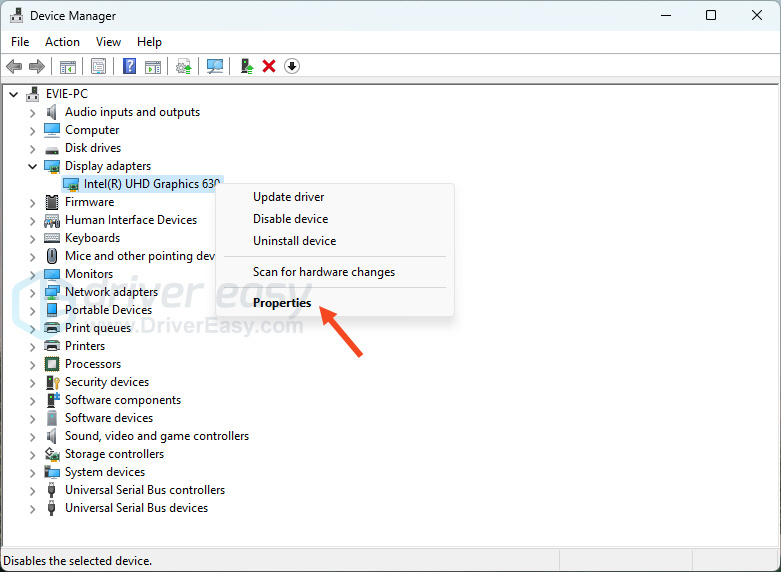
4) Select the Driver tab and click Roll Back Driver, then follow the on-screen instructions.
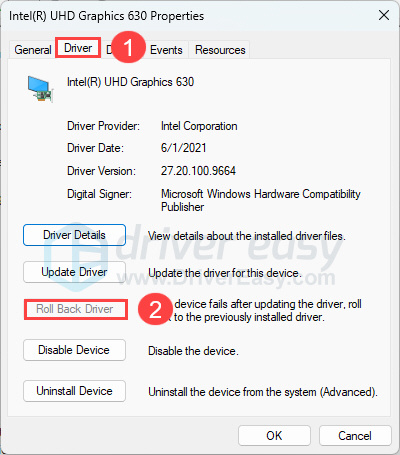
Note: If the Roll Back Driver option is grayed out, you can download a previous video driver from the manufacturer’s website for your video card and install it on your computer, or try the following Method 2.
5) When complete, restart your computer, and see if Windows can now detect your second monitor.
Fix 2: Update your video driver
If rolling back your video driver doesn’t help your computer recognize your second monitor, it’s likely that you’re using the wrong driver. There are two ways you can get the right driver for your video card: manually or automatically.
Manual driver update – You can update your video driver manually by going to the manufacturer’s website for your video card, and searching for the most recent correct driver for it. Be sure to choose the only driver that is compatible with your variant of Windows.
Automatic driver update – If you don’t have the time, patience or computer skills to update your video driver manually, you can, instead, do it automatically with Driver Easy. Driver Easy will automatically recognize your system and find the correct driver for your exact video card, and your variant of Windows, and it will download and install it correctly:
1) Download and install Driver Easy.
2) Run Driver Easy and click the Scan Now button. Driver Easy will then scan your computer and detect any problem drivers.
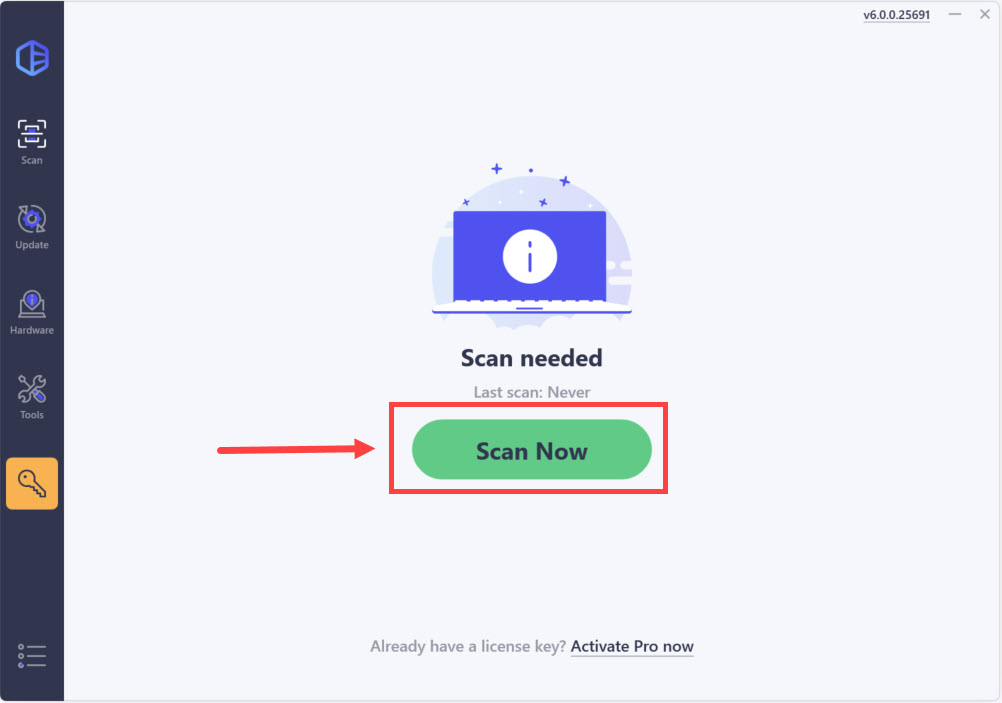
3) Click Update All to automatically download and install the correct version of all the drivers that are missing or out of date on your system. (This will prompt an upgrade to the Pro version. Driver Easy offers a 7-day free trial, providing access to premium features such as high-speed downloads and one-click installs without any charges until the trial period ends.)
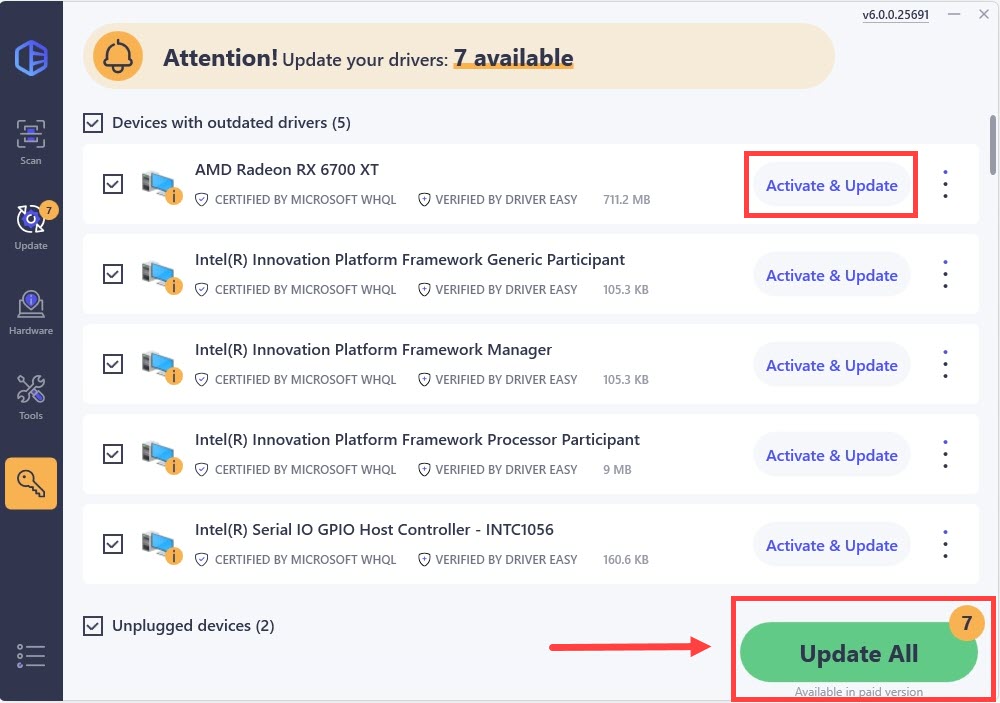
4) Restart your computer and check to see if Windows can now detect your second monitor.
Fix 3: Make sure your monitor refresh rates are set to the same
The monitor/screen refresh rate is the number of times per second that your screen refreshes the images on it. When two monitors are connected to your Windows PC together, the refresh rate plays a vital role. Some graphics cards don’t support different refresh rates at the same time.
So if the screen fresh rate of your two monitors is different, your second monitor probably can’t be detected. To address this, follow the steps below to make sure your monitor refresh rates are set to the same.
On Windows 10:
On Windows 11:
Windows 10:
1) On your keyboard, hold down the Windows logo key, then press the I key.
2) Click System on the pop-up Settings window.

3) Click Advanced display settings under the Display section.

4) Click Display adapter properties for Display 1, then click Display adapter properties for Display 2.

5) Check and see the Screen refresh rates of both monitors under the Monitor sections.

If the rates are different, then change either one to set them to the same. Then save your change by Apply > OK and proceed to check to see if your second monitor is detected successfully.
Windows 11:
1) Right-click on any empty space on the desktop and select Display settings.
2) Click Advanced display under the Related settings section.
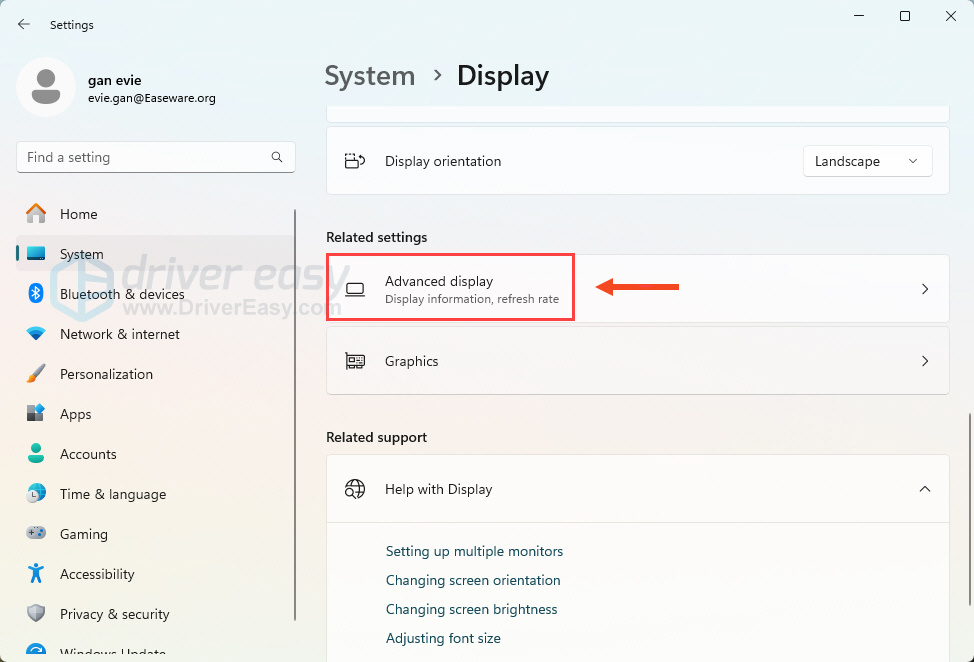
4) Select the different displays from the top, then adjust the refresh rates of your to the same in the Choose a refresh rate section.
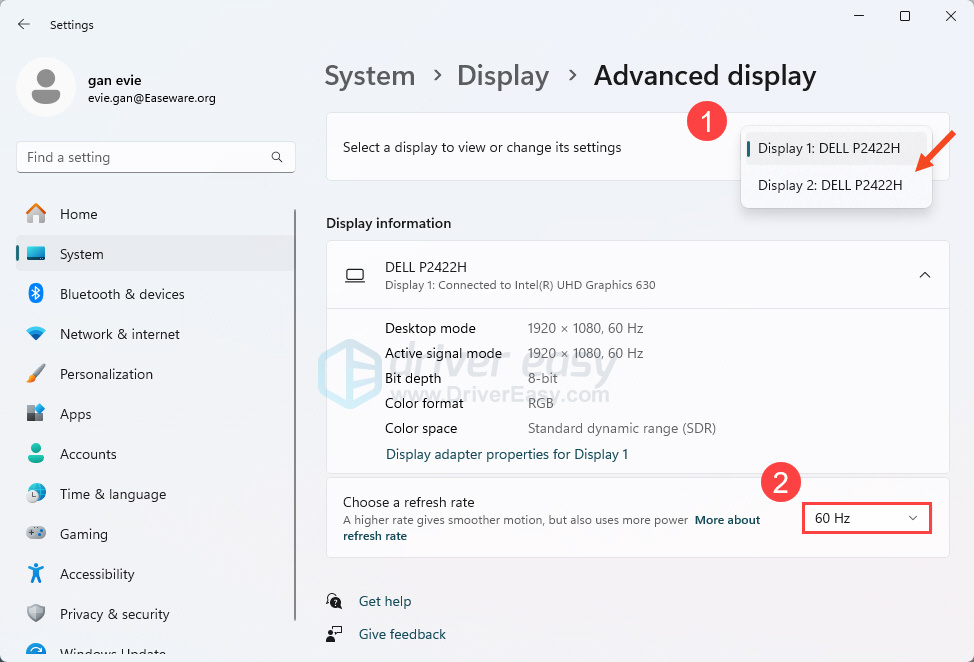
If the rates have been set to the same already, then move on to the next fix.
Fix 4: Change your project mode
Sometimes your second monitor can’t be detected might be due to the wrong-set project mode. Quickly and easily change your project mode by these two steps:
1) On your keyboard, hold down the Windows logo key, then press the P key.
2) Select Duplicate if you want to display the same screen on your two monitors. Select Extend if you want to earn more workplace.
Fix 5: Repair corrupted system files
Missing, corrupted, or damaged system files may be the culprit for this error. To eliminate this issue as a possible cause, you can try below to repair possible system file issues.
System File Checker (SFC) is a handy feature in Windows that helps scan your system files and repair missing or corrupted system files(including those related to BSOD). To run the SFC scan:
1) On your keyboard, press the Windows logo key and type cmd into the search bar. Then right-click on Command Prompt and click Run as administrator.
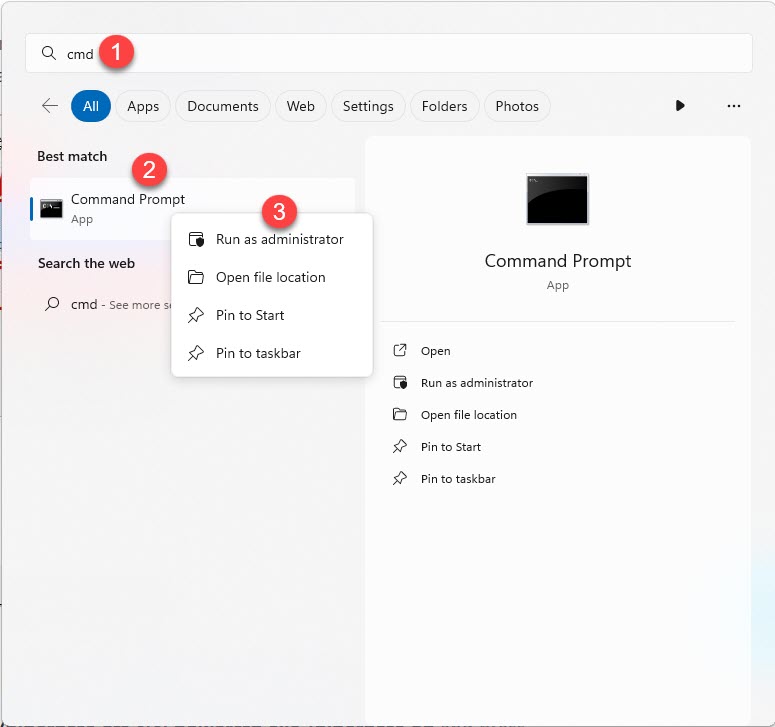
2) Click Yes when prompted to confirm.
3) In the command prompt window, type sfc /scannow and press Enter.
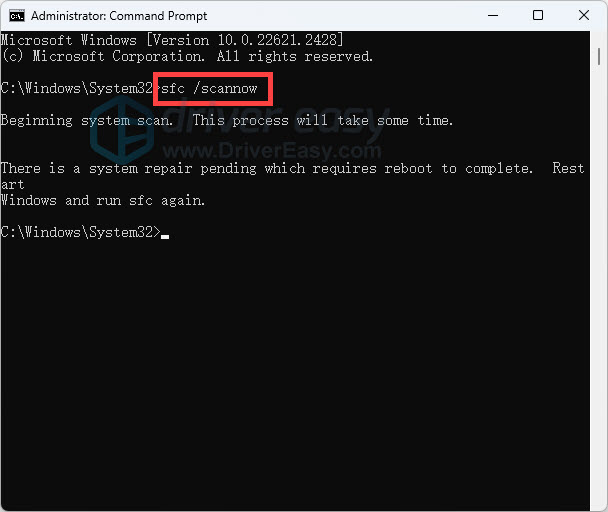
It’ll take some time for the SFC to replace the corrupted system files with new ones if it detects any, so please be patient.
4) Restart your computer for the changes to take effect.
5) Check your computer to see if the problem has been fixed.
That’s all there is to it. Hopefully one of these methods resolves your problem, and you can now extend your desktop to your second monitor, or mirror/project your laptop onto your second monitor.
If you have any questions, ideas or suggestions, please let me know in the comments. Thanks for reading!

